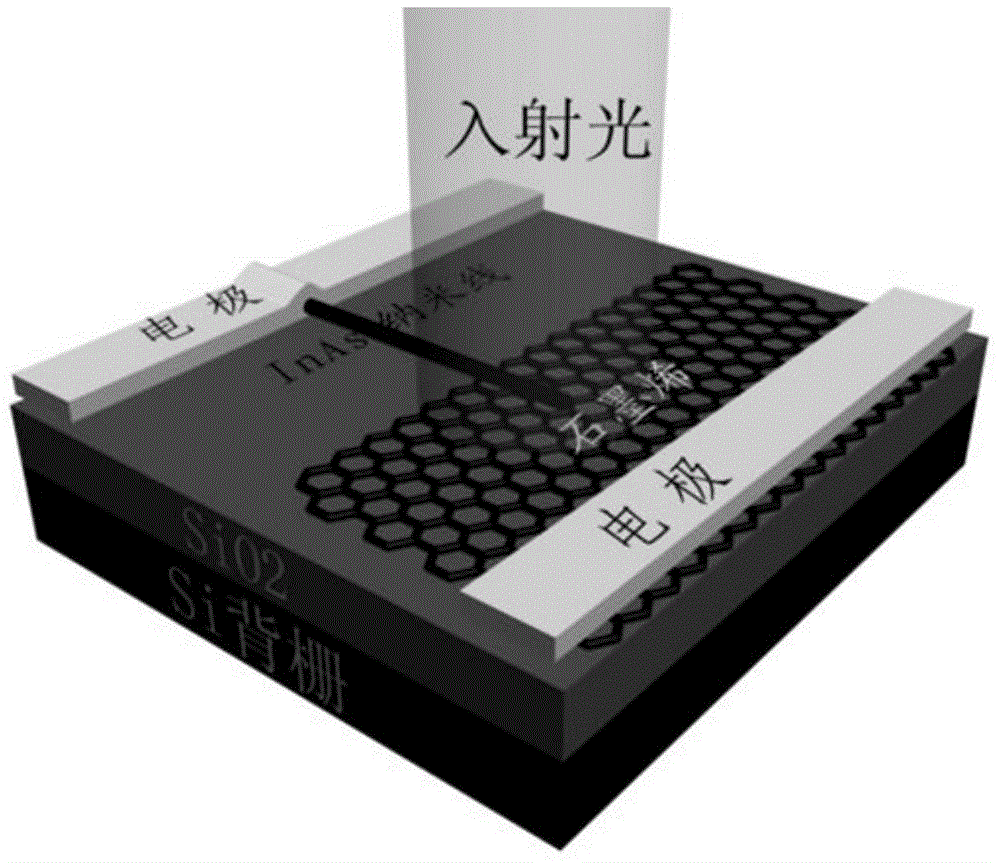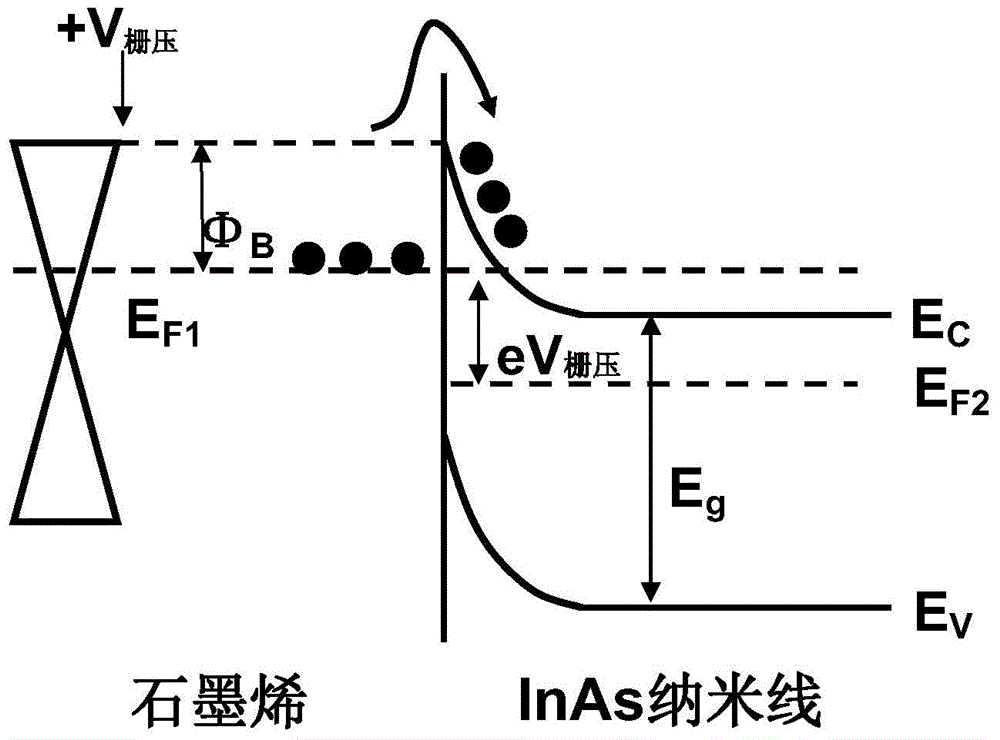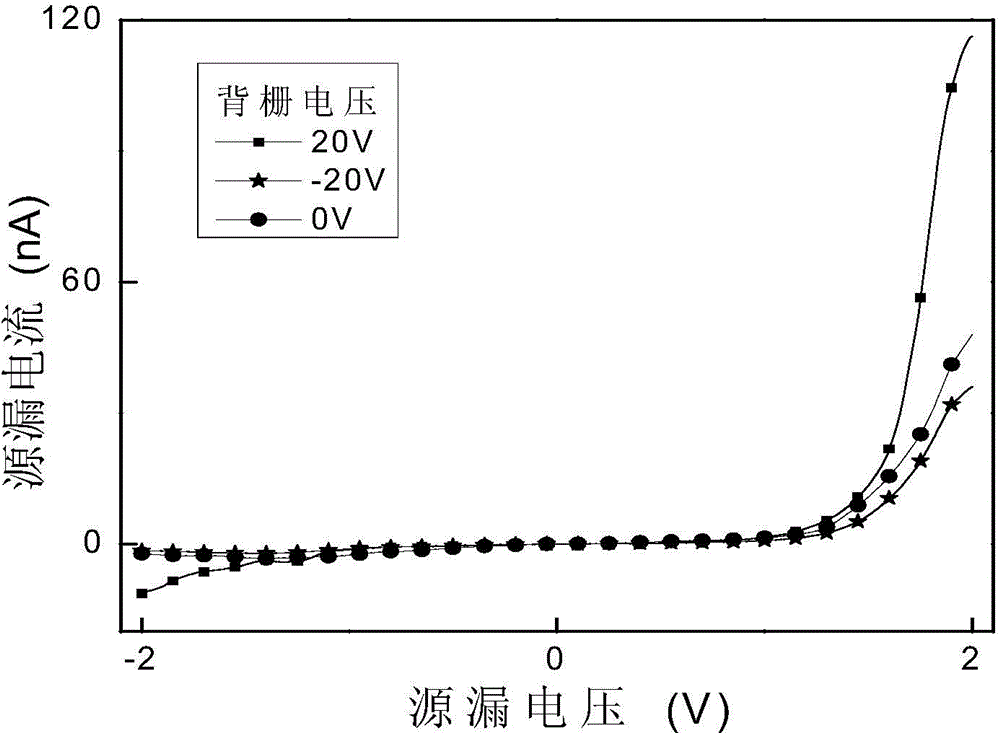Method for increasing the switch ratio of graphene and nanowire heterojunction detector
A technology of heterojunction detectors and nanowires, applied in semiconductor devices, sustainable manufacturing/processing, electrical components, etc., can solve the problems of large dark current, low switching ratio, etc., to improve switching ratio, suppress dark current, Good believability and intuitive effect
- Summary
- Abstract
- Description
- Claims
- Application Information
AI Technical Summary
Problems solved by technology
Method used
Image
Examples
Embodiment Construction
[0017] The specific embodiment of the present invention is described in detail below in conjunction with accompanying drawing:
[0018] The present invention has developed graphene and InAs nanowire Schottky photodetectors, which have SiO 2 Single-layer graphene was prepared on the P-type Si substrate, and the epitaxially grown InAs nanowires were physically transferred to the single-layer graphene, and chromium and gold were deposited as source and drain electrodes by electron beam lithography and thermal evaporation technology.
[0019] Specific steps are as follows:
[0020] 1InAs nanowires are catalyzed by gold nanoparticles in the Riber 32MBE system, using vapor-liquid-solid (VLS) in GaAs(111) B growth on the substrate surface. First, the GaAs substrate is deoxidized at 630°C for 15 minutes, and a buffer layer of 300 nm is grown to obtain a relatively smooth surface. Then, transfer the GaAs substrate into the MBE preparation chamber, deposit an extremely thin gold film...
PUM
| Property | Measurement | Unit |
|---|---|---|
| length | aaaaa | aaaaa |
| diameter | aaaaa | aaaaa |
Abstract
Description
Claims
Application Information
 Login to View More
Login to View More - R&D
- Intellectual Property
- Life Sciences
- Materials
- Tech Scout
- Unparalleled Data Quality
- Higher Quality Content
- 60% Fewer Hallucinations
Browse by: Latest US Patents, China's latest patents, Technical Efficacy Thesaurus, Application Domain, Technology Topic, Popular Technical Reports.
© 2025 PatSnap. All rights reserved.Legal|Privacy policy|Modern Slavery Act Transparency Statement|Sitemap|About US| Contact US: help@patsnap.com



